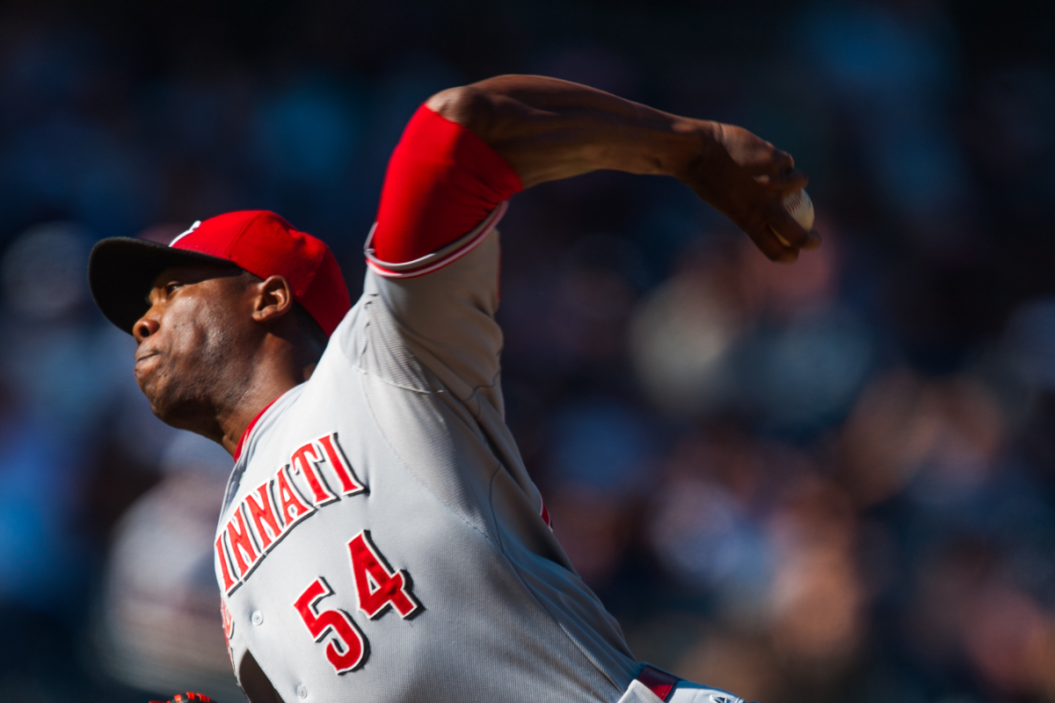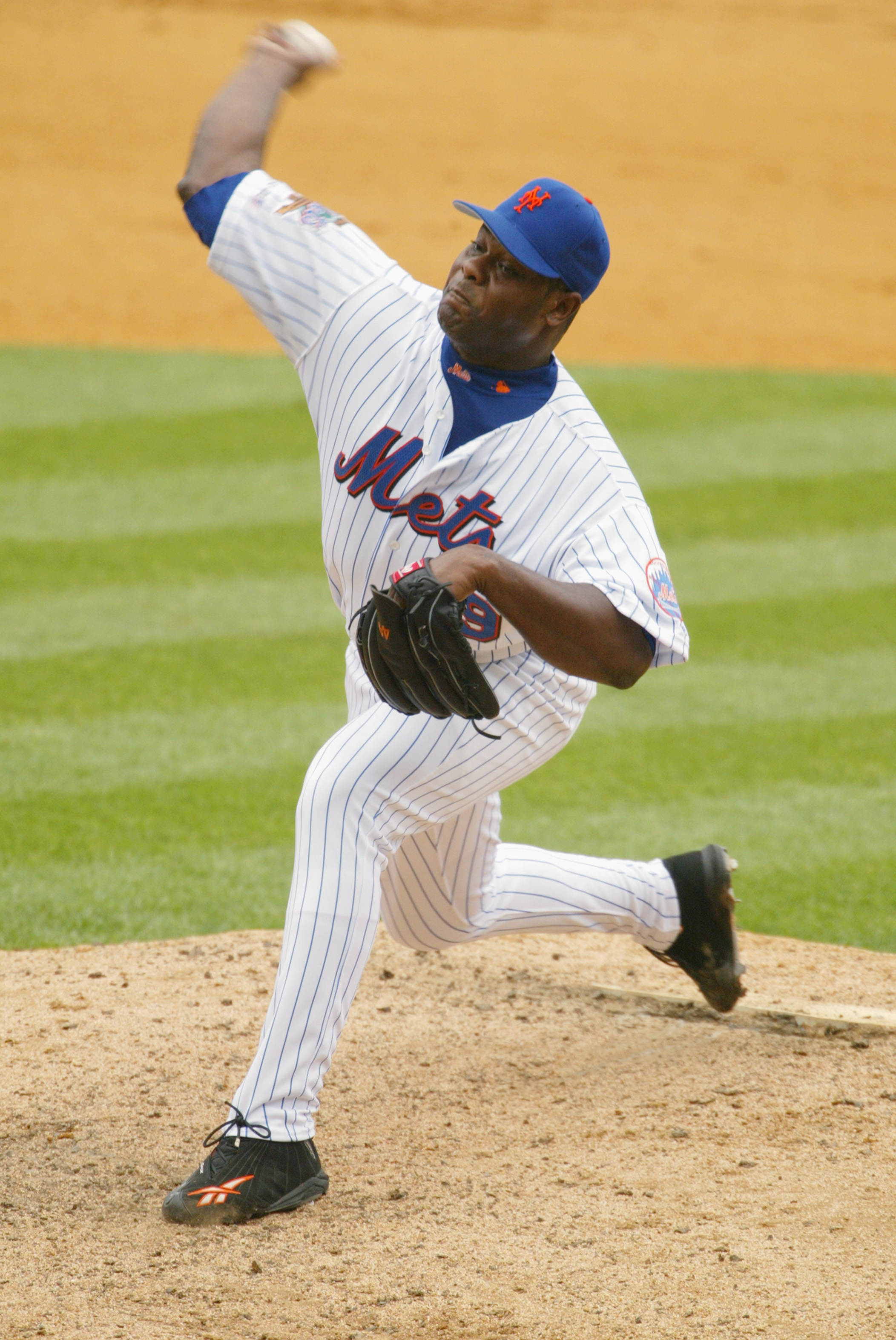When we talk about speed, our minds often wander to the quickest things in the world. We think about the fastest possible speed in the universe, which is the speed of light, zipping along at an incredible 670,616,629 mph. That is, you know, a truly astonishing pace. Then there are things like the peregrine falcon, a bird that dives at over 6.2 mph, or the cheetah, the quickest animal on land. These examples really show us what peak velocity looks like in different parts of our natural world, and that includes sports too.
Baseball, in its own way, brings a similar kind of excitement when it comes to raw speed. For fans, there is something truly special about seeing a pitcher throw a baseball with incredible force. It is a moment that can make you gasp, frankly. The ball seems to just vanish from the pitcher's hand and arrive at the catcher's mitt in what feels like an instant, a blur of motion.
This pursuit of speed on the mound has been a big part of baseball for a very long time. People have always wanted to know just who holds the record for the quickest pitch ever recorded. It is a question that stirs up a lot of chat among those who follow the game closely. So, we are going to look into this exciting topic and find out who currently stands as the fastest pitcher to ever step onto a baseball field, and what makes their throws so special, as a matter of fact.
Table of Contents
- The Quest for Speed on the Mound
- How Pitching Speed is Measured
- The Current Speed King: Aroldis Chapman
- Other Speed Legends in Baseball History
- The Science Behind a Fast Pitch
- The Impact of Technology on Pitching Speed
- Looking Ahead to the Future of Pitching Speed
- Frequently Asked Questions About Pitching Speed
- A Final Thought on Speed
The Quest for Speed on the Mound
For a very long time, baseball fans and players have been fascinated by how fast a pitcher can throw a baseball. It is, you know, a core part of the game's excitement. From the earliest days of the sport, stories of pitchers throwing with immense force have been passed around. Before modern tools were around, people relied on their eyes and ears to judge how fast a ball was moving. These were, in some respects, simpler times, but the wonder was still there.
The idea of "fastest" has changed a bit over the years as measurement tools got better. What was once just a guess or a legend became something that could be proven with numbers. This change made the competition for the title of "fastest pitcher ever" even more interesting, because now there was real data to back things up. It is, in a way, like how we now measure internet speeds with tools like Fast.com, giving us exact numbers for upload speed and connection latency, rather than just guessing.
The desire to throw faster is not just about bragging rights, though. A truly quick fastball is a big advantage for a pitcher. It gives the batter less time to react, making it much harder to hit the ball squarely. So, pitchers work very hard to get their velocity up, knowing it can make a real difference in how well they play. This constant push for more speed is what makes the question "What is the fastest pitcher ever?" so compelling, honestly.
How Pitching Speed is Measured
Measuring the speed of a baseball pitch has come a very long way from simply watching the ball fly. In the old days, people might have used a stopwatch and some basic math, which was, you know, not very precise. Today, we have much better tools that give us very accurate readings. These tools help us really understand just how fast a pitcher is throwing, and that is a big deal for records.
The most common way to measure pitch speed now is with radar guns. These devices send out radio waves that bounce off the moving baseball and come back to the gun. By looking at how the waves change, the radar gun can figure out the ball's speed. It is a bit like how a police officer checks a car's speed, actually. For baseball, these readings are usually taken either right out of the pitcher's hand or at a point closer to home plate. The readings taken right out of the hand tend to be a little higher, as a matter of fact, because the ball starts to slow down almost immediately after it leaves the pitcher's fingers.
Another system used in baseball is Statcast, which uses very advanced cameras and computer vision to track the ball's path. This system gives a lot of detailed information, not just speed, but also spin rate, launch angle, and more. It is, you know, a bit like how some car databases, like the encycarpedia®, track detailed specs for millions of vehicles. Statcast provides a more complete picture of a pitch, and its speed readings are considered the official ones for Major League Baseball. This technology has really changed how we talk about and compare pitching speeds, giving us a clearer view of who is truly the fastest, in a way.
The Current Speed King: Aroldis Chapman
When you ask "What is the fastest pitcher ever?", one name typically comes up right away: Aroldis Chapman. This left-handed pitcher, often called "The Cuban Missile," has been known for his incredibly fast fastball for many years now. He has, you know, consistently thrown pitches that push the very limits of human capability on a baseball field. His throws are a sight to behold, honestly, often reaching speeds that seem almost unbelievable.
Chapman holds the record for the fastest recorded pitch in Major League Baseball history. On September 24, 2010, while playing for the Cincinnati Reds, he threw a fastball that registered an astounding 105.8 miles per hour. This speed was, quite frankly, a shock to many and immediately put him in a special category. It was a moment that baseball fans will talk about for a long time, as it really set a new standard for raw velocity. This kind of speed is similar to how the ZR1x, with its immense power, set the fastest lap time on a track, showing what peak performance can achieve, apparently.
Even years later, Chapman continues to throw pitches well over 100 mph, showing remarkable consistency. While other pitchers might hit 100 mph on occasion, Chapman does it with a regularity that is truly something to see. His ability to maintain such high velocity throughout his career is a big part of why he is still considered the benchmark for pitching speed. He is, you know, a true example of what dedicated training and natural talent can achieve on the mound.
Aroldis Chapman: Personal Details
| Detail | Information |
|---|---|
| Full Name | Albertín Aroldis Chapman de la Cruz |
| Nickname | The Cuban Missile |
| Born | February 28, 1988 (age varies by current year) |
| Birthplace | Holguín, Cuba |
| Height | 6 ft 4 in (1.93 m) |
| Weight | 218 lb (99 kg) |
| Throws | Left |
| MLB Debut | August 31, 2010 |
| Primary Team(s) | Cincinnati Reds, New York Yankees, Kansas City Royals, Texas Rangers, Pittsburgh Pirates |
| Record Pitch Speed | 105.8 mph (September 24, 2010) |
Other Speed Legends in Baseball History
While Aroldis Chapman holds the official record for the fastest pitch, many other pitchers throughout history have been known for their incredible velocity. The discussion about "fastest pitcher ever" often includes these legends, even if their speeds were not measured with today's precise technology. It is, you know, a fun way to think about how speed has evolved in the game.
One name that often comes up from earlier eras is Nolan Ryan. He played for a very long time and was famous for his overpowering fastball. While official radar guns were not common when he pitched in his prime, many who faced him or watched him play believed his fastball was easily over 100 mph. Some unofficial measurements from the 1970s even put him around 100.9 mph. Ryan's sheer dominance and strikeout numbers certainly suggest a very, very fast arm, in a way.
Another pitcher frequently mentioned in speed talks is Bob Feller, who played in the 1930s and 40s. Stories about his fastball are legendary, with some saying it reached speeds that were unheard of for his time. While we do not have modern radar gun data for Feller, his reputation as "Rapid Robert" speaks volumes about his velocity. These historical figures, though lacking modern data, still hold a special place in the story of baseball's fastest arms. Their speed was, apparently, a sight to behold, even without precise numbers to back it up, as a matter of fact.
In more recent times, pitchers like Stephen Strasburg, Jordan Hicks, and Hunter Greene have also shown incredible velocity, consistently throwing pitches in the triple digits. Hicks, for example, has thrown pitches that nearly match Chapman's record. These pitchers continue to push the boundaries of what is possible, reminding us that the quest for ultimate speed on the mound is always ongoing. It is, you know, a pretty exciting thing to watch, honestly, as new talent comes into the league.
The Science Behind a Fast Pitch
Throwing a baseball at over 100 miles per hour is not just about having a strong arm; it is a complex athletic act that involves the entire body. There is a lot of science that goes into generating such incredible speed. It is, you know, a bit like how the fastest production cars are well designed to deliver great functionality and speed. A pitcher's body works together like a very efficient machine to transfer energy to the ball, as a matter of fact.
The process starts with the lower body. A pitcher uses their legs and hips to create power, pushing off the mound with force. This initial drive is very important for building momentum. Then, this energy moves up through the torso, which rotates with a lot of speed. This rotation is a big part of what makes a pitch fast, as it helps create a whip-like motion, honestly.
Finally, the energy reaches the arm and hand. The arm acts like a lever, accelerating the ball forward. The wrist and fingers give the ball its final push and spin. This entire sequence happens in a fraction of a second, with different body parts working together in perfect timing. It is, you know, a bit like Usain Bolt's running style; while he is a tall athlete, his ability to generate speed comes from a very efficient and powerful sequence of movements, not just his size. Pitchers, like elite sprinters, use their whole body in a very compact and powerful way to achieve such high velocities.
Biomechanics experts study these movements very closely to understand how pitchers generate speed and how to help them do it safely. They look at things like arm slot, body position, and how much force is put on different joints. It is, you know, a field that constantly tries to figure out the best ways to throw fast while keeping the pitcher healthy, because throwing at such high speeds puts a lot of stress on the body, to be honest.
The Impact of Technology on Pitching Speed
Technology has changed baseball in many ways, and how we measure and even develop pitching speed is a big part of that. In the past, discussions about the fastest pitcher were based on stories and rough estimates. Now, with advanced tools, we have very precise data. This shift has, you know, really made a difference in how we understand the game, as a matter of fact.
As mentioned before, radar guns and Statcast systems give us accurate speed readings. This means that when we talk about a pitcher throwing 105.8 mph, we know that number is reliable. This precision allows teams and coaches to track a pitcher's performance in much greater detail. It is, you know, a bit like how Ookla’s Speedtest reports crown the fastest internet providers based on median download speeds, providing clear, data-driven answers.
Beyond just measuring, technology also helps pitchers train to throw faster. High-speed cameras can record a pitcher's mechanics in incredible detail, showing coaches exactly where improvements can be made. Pitchers can use special weighted balls, resistance bands, and other training tools designed to build strength and improve their throwing motion. There are also pitching machines that can simulate various pitches, helping batters get used to high speeds, and helping pitchers refine their technique.
Data analytics plays a big role too. Teams can look at patterns in pitching speed, how it changes over a game, or how it relates to injuries. This information helps them make smarter decisions about player development and how to manage their pitchers during a season. So, technology is not just about finding the fastest pitcher; it is also about helping more pitchers reach their speed potential and stay healthy while doing it, honestly.
Looking Ahead to the Future of Pitching Speed
The question of "What is the fastest pitcher ever?" is one that will probably keep coming up as long as baseball is played. We have seen pitchers push the limits of speed over the years, and it is natural to wonder if anyone will ever throw faster than Aroldis Chapman's record. It is, you know, a really exciting thought for fans of the game.
With continued advancements in sports science, training methods, and biomechanics, it is certainly possible that we could see even faster pitches in the future. Athletes are always finding new ways to improve their performance, and baseball players are no different. Young pitchers today are often exposed to advanced training and data from a very early age, which could help them develop even greater velocity. This is, you know, a bit like how new generations of cars are always designed to be faster and more efficient.
However, there are also limits to human physiology. While training can make a big difference, there is a point where the human body simply cannot generate more force without risking injury. The arm and shoulder are put under immense stress when throwing at such high speeds. So, while we might see incremental increases, a truly massive jump in pitching speed might be harder to achieve. It is, you know, a delicate balance between pushing limits and staying healthy, frankly.
Regardless of whether the record is broken soon, the fascination with pitching speed will remain. It is a fundamental part of what makes baseball so exciting to watch. The sheer power and precision required to throw a baseball over 100 mph will always capture our attention and admiration. It is, you know, a testament to the incredible abilities of these athletes, and we will definitely keep watching to see who the next speed sensation might be, as a matter of fact. Learn more about baseball history on our site, and you can also link to this page to learn about pitching mechanics.
Frequently Asked Questions About Pitching Speed
What is the fastest pitch ever recorded in MLB?
The fastest pitch officially recorded in Major League Baseball was thrown by Aroldis Chapman. It registered an incredible 105.8 miles per hour. This happened back in 2010, and it has stood as the record ever since, honestly. It is, you know, a truly remarkable display of arm strength and technique.
Who are some other pitchers known for their high velocity?
Besides Aroldis Chapman, many pitchers have been famous for throwing very hard. Nolan Ryan is a legend from earlier times, widely believed to have thrown over 100 mph even without modern radar guns. In recent years, pitchers like Jordan Hicks, Stephen Strasburg, and Hunter Greene have also regularly hit triple digits on the radar gun, honestly. They are, you know, truly powerful arms in the game today.
How is pitching speed measured in baseball?
Pitching speed in baseball is mainly measured using radar guns and advanced camera systems like Statcast. Radar guns use radio waves to calculate the ball's speed, usually right as it leaves the pitcher's hand. Statcast, on the other hand, uses multiple cameras and computer vision to track the ball's entire flight path, giving a very precise speed
Related Resources:



Detail Author:
- Name : Sallie Collier
- Username : rath.toni
- Email : lucy.daugherty@beahan.com
- Birthdate : 1977-02-15
- Address : 180 Graciela Throughway Apt. 548 Jeffereystad, NY 24873
- Phone : +17407338686
- Company : Dare-Bode
- Job : Dancer
- Bio : Aut et rerum saepe beatae. Pariatur doloribus excepturi fugit sit voluptatibus. Consequatur ipsa dolores et perferendis quidem ut dolorem eaque.
Socials
facebook:
- url : https://facebook.com/susie_beahan
- username : susie_beahan
- bio : Commodi odio iure accusantium repellendus.
- followers : 3856
- following : 521
linkedin:
- url : https://linkedin.com/in/beahans
- username : beahans
- bio : Est laudantium blanditiis nulla sapiente.
- followers : 251
- following : 687
instagram:
- url : https://instagram.com/susie_id
- username : susie_id
- bio : Ea nostrum ipsum odit doloremque. Rerum commodi doloremque voluptas et. Ab et magni voluptate.
- followers : 5605
- following : 680
twitter:
- url : https://twitter.com/sbeahan
- username : sbeahan
- bio : Aut id nihil quas laudantium ut. Eius nesciunt aliquid pariatur ut.
- followers : 5254
- following : 2089